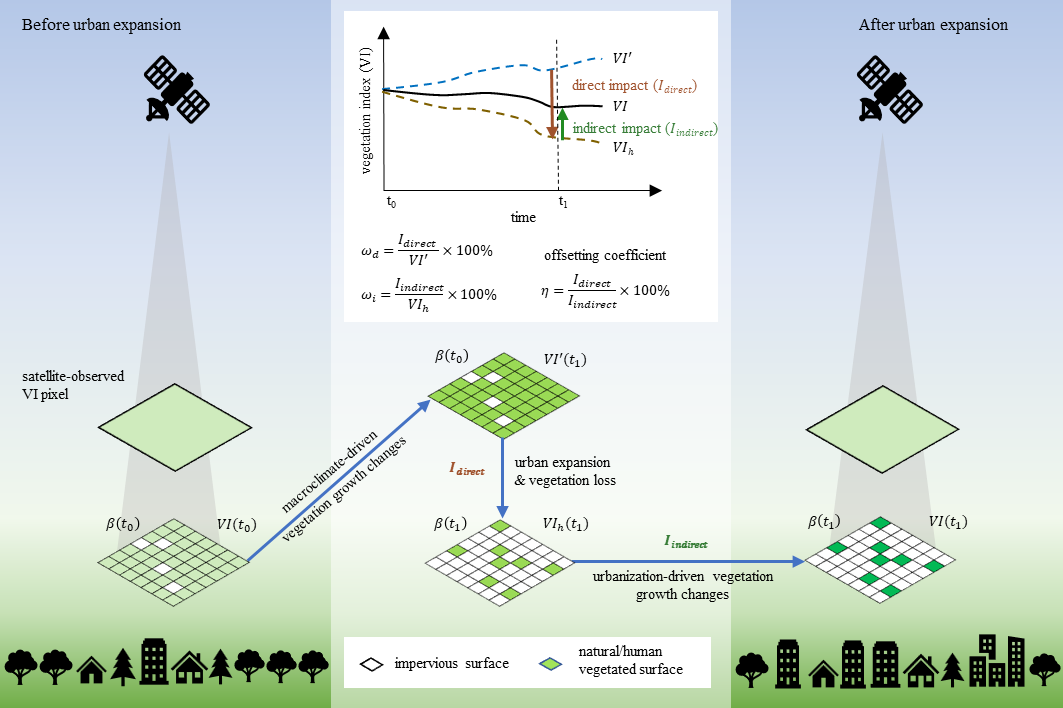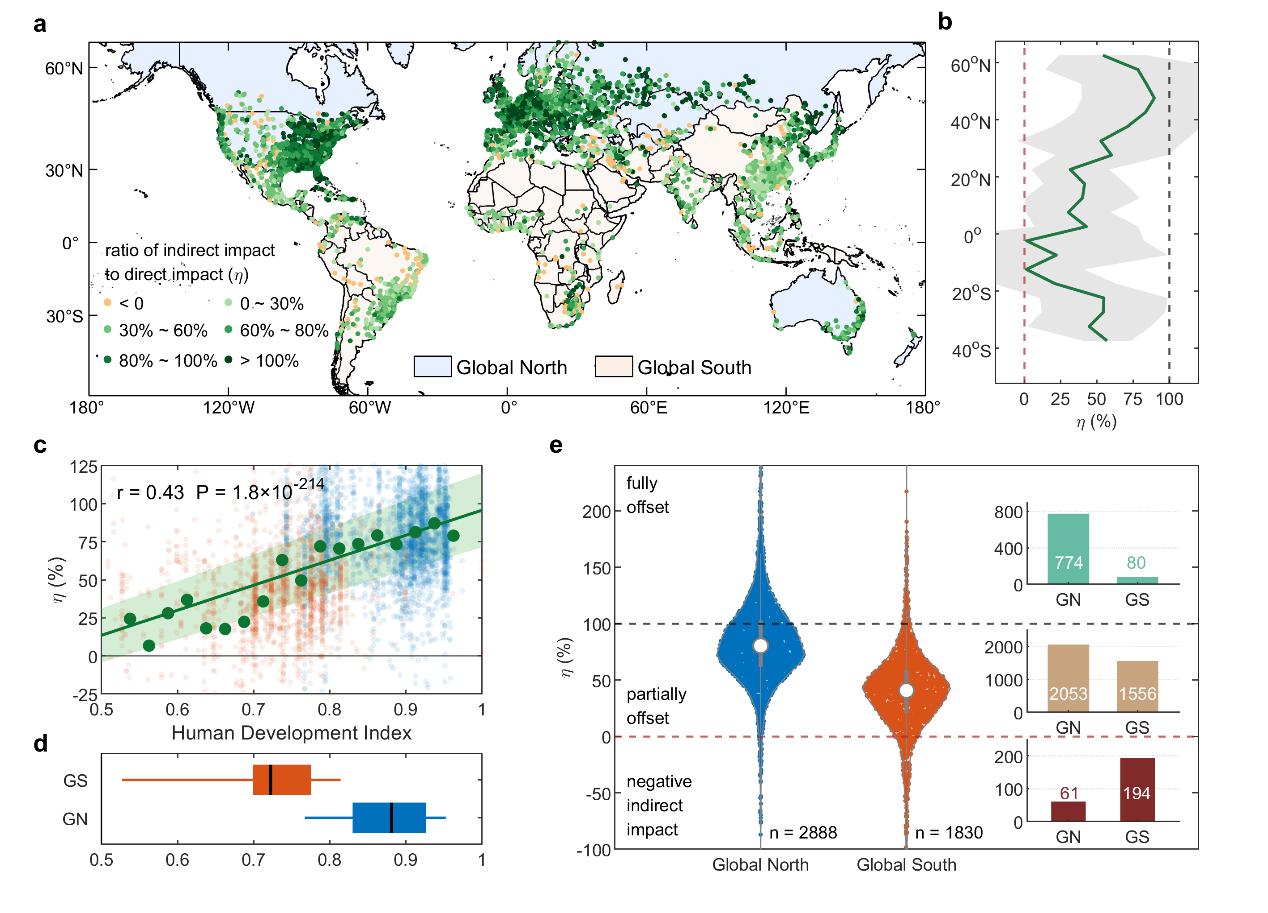More than half of the world's population now lives in cities, and the urban population will increase by approximately 2.5 billion by 2050. As a critical regulator of the urban climate and the environment, vegetation plays an important role in alleviating urban heat, affecting air quality and improving human health outcomes. Under ongoing urbanization, the importance of urban vegetation has become increasingly prominent. However, driven by global climate change and rapid urbanization, vegetation in urban and peri-urban areas has undergone profound changes. On the one hand, urbanization causes substantial vegetation loss due to landcover transitions from natural vegetated surfaces to impervious surfaces (direct effect of urbanization). On the other hand, changes in the urban environment (e.g., the UHI effect, elevated CO2 emissions and nitrogen deposition) and human management practices promote the growth of urban vegetation (indirect effects of urbanization). Although previous studies have quantified the direct and indirect effects of urbanization on vegetation growth based on “space-for-time” method at the urban‒rural gradient, from the perspective of temporal dynamics, the extent to which these direct and indirect impacts affect vegetation dynamics across global cities and how urban greening will change in the future remain unclear.

Figure 1. Schematic diagram of the effects of urbanization and macroclimate change on vegetation growth.
To address these research gaps, Bo Qiu and Weidong Guo's team used the MODIS Enhanced Vegetation Index (EVI, which represents the vegetation growth state) and long-term high-resolution impervious surface area datasets to quantify the direct and indirect effects of urbanization on vegetation dynamics in 4718 cities from 2000‒2019. They developed a conceptual framework for quantifying the direct and indirect effects of urbanization on EVI dynamics, considering the effects of macroclimate change. They reported that positive indirect impacts mitigated 56.85% of the negative direct impacts across 4,718 cities worldwide from 2000‒2019. Notably, the offsetting coefficient is much greater in cities of the Global North (79.13%) than in Global South cities (38.01%) partly due to their socioeconomic differences. This disparity in urban greening dynamics will continue in the future, with approximately 60% of Global North cities and 30% of Global South cities projected to be greener by 2040. These findings provide a more comprehensive understanding of global urban greening dynamics and provide valuable references for achieving the 11th UN Sustainable Development Goals Sustainable Cities and Communities.

Figure 2. Differences in the offsetting coefficients of the indirect impacts to direct impacts across 4,718 cities worldwide.
The findings were recently published online in Nature Sustainability under the title Contrasting effects of urbanization on vegetation between the Global South and Global North. Associate Professor Bo Qiu and Professor Weidong Guo from the School of Atmospheric Sciences of Nanjing University are the corresponding authors of this paper. Jiuyi Chen, a Ph.D. candidate from 2021, is the first author. The coauthors of the paper include Dr. Yun Qian (Lab Fellow) and Dr. TC Chakraborty (Scientist III) from the Pacific Northwest National Laboratory of the USA, Dr. Xin Miao from Nanjing University and some students from Professor Guo's team. This work was supported by the National Natural Science Foundation of China (42175136, 42130602) and the Frontiers Science Center for Critical Earth Material Cycling, Nanjing University, and the Jiangsu Collaborative Innovation Center of Climate Change.
Reference:
Chen, J., Qiu, B.*, Chakraborty, T.C., Miao, X., Cao Y., Li L., Zhao, S., Ni, Y., Tian, X., Qian, Y., & Guo, W.*. Contrasting effects of urbanization on vegetation between the Global South and Global North. Nature Sustainability, (2025). https://doi.org/10.1038/s41893-025-01520-0
